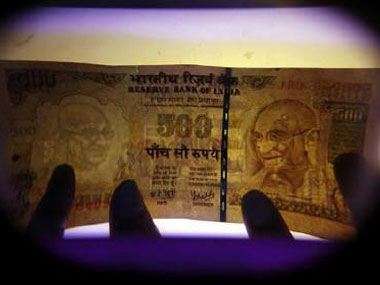India has a problem of inflation. The US, Eurozone and Japan have problems of no inflation. Consumer prices in India are at 9.5 percent levels while consumer prices in the US, Eurozone and Japan are at 1.2 percent, 0.7 percent and 0.7 percent, respectively.
The European Central Bank (ECB) surprised markets by reducing the policy rate to all time lows of 0.25% in its policy meet yesterday. The policy rates of the US Federal Reserve (Fed) and the Bank of Japan (BoJ) are also at 0 percent to 0.25 percent.
Inflation threshold levels of the Fed, ECB and BoJ is 2 percent and CPI trending well below 2 percent levels is forcing the central banks to maintain an ultra-loose monetary policy.
The Fed and BoJ have asset purchase programmes running at $85 billion and $56 billion a month while the ECB is making liquidity cheap for European banks. Economic growth in the US sprinted at 2.8 percent for the third quarter of 2013 while the Eurozone is just coming out of a recession and Japan is still struggling to show sustainable growth.
[caption id=“attachment_1158277” align=“alignleft” width=“380”]
 The rupee has been hit by inflation and current account deficit that touched record highs of 4.8 percent of GDP in 2012-13. The markets have not favoured the rupee despite the interest rate differentials between India, the US and Eurozone.[/caption]
The rupee has been hit by inflation and current account deficit that touched record highs of 4.8 percent of GDP in 2012-13. The markets have not favoured the rupee despite the interest rate differentials between India, the US and Eurozone.[/caption]
India, on the other hand, is seeing growth at below trend levels while inflation is trending at highly uncomfortable levels. GDP growth is at decade lows for India and CPI has been running at over 9 percent levels for the last five years. The RBI has raised rates by 50 bps since 20 September on inflation worries.
Interestingly, big developed nations and developing nations such as India are divided vertically: the former is grappling with deflation and the latter with inflation. The currency markets have clearly favoured the deflationary economies given loose central bank liquidity. The rupee, which is now trading at 63 against the dollar, is down 15 percent against the dollar over the last one year. It is down 18 percent against the euro and up 5 percent against the Japanese yen during the same period.
The rupee has been hit by inflation and current account deficit that touched record highs of 4.8 percent of GDP in 2012-13. The markets have not favoured the rupee despite the interest rate differentials between India, the US and Eurozone.
Policy rate differentials are at levels of 725 basis points to 750 basis points. Going forward, the markets will find the rate differentials attractive given that the Fed and ECB have pledged to maintain rates at record lows until the time inflation rises and unemployment rate comes off.
US unemployment rate is running at 7.2 percent levels (Fed target is 6.5 percent) while Eurozone unemployment rate is running at record highs. The earliest indications of rate increases in these countries are mid 2015.
The rupee can benefit from the confidence of policy makers in lowering the CAD by 30 percent from $87 billion seen in 2012-13 to $60 billion in 2013-14. The RBI has promised to bring down long-term inflation expectations and if it succeeds through rate hikes, the markets will start favouring the rupee.
The rupee in the near term will move more on market positioning, news of Fed tapering off bond purchases and rate hikes by the RBI. In the medium term, the outlook is far better given improved macro environment expectations and the rate gap with the dollar and the euro.
Arjun Parthasarathy is the editor of www.investorsareidiots.com a web site for investors.
Arjun Parthasarathy has spent 20 years in the financial markets, having worked with Indian and multinational organisations. His last job was as head of fixed income at a mutual fund. An MBA from the University of Hull, he has managed portfolios independently and is currently the editor of www.investorsareidiots.com </a>. The website is for investors who want to invest in the right financial products at the right time.
)